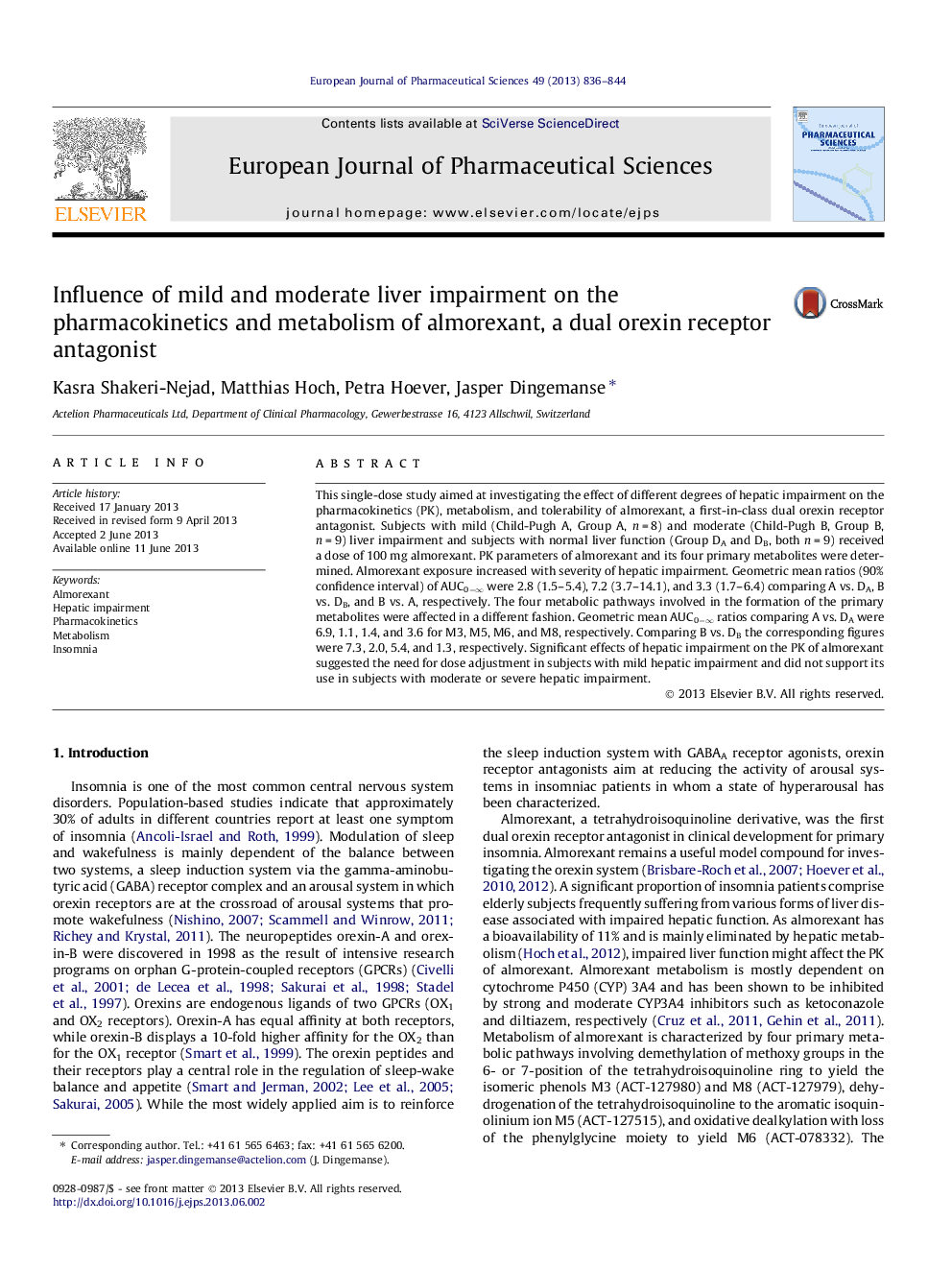| Article ID | Journal | Published Year | Pages | File Type |
|---|---|---|---|---|
| 2480750 | European Journal of Pharmaceutical Sciences | 2013 | 9 Pages |
This single-dose study aimed at investigating the effect of different degrees of hepatic impairment on the pharmacokinetics (PK), metabolism, and tolerability of almorexant, a first-in-class dual orexin receptor antagonist. Subjects with mild (Child-Pugh A, Group A, n = 8) and moderate (Child-Pugh B, Group B, n = 9) liver impairment and subjects with normal liver function (Group DA and DB, both n = 9) received a dose of 100 mg almorexant. PK parameters of almorexant and its four primary metabolites were determined. Almorexant exposure increased with severity of hepatic impairment. Geometric mean ratios (90% confidence interval) of AUC0−∞ were 2.8 (1.5–5.4), 7.2 (3.7–14.1), and 3.3 (1.7–6.4) comparing A vs. DA, B vs. DB, and B vs. A, respectively. The four metabolic pathways involved in the formation of the primary metabolites were affected in a different fashion. Geometric mean AUC0−∞ ratios comparing A vs. DA were 6.9, 1.1, 1.4, and 3.6 for M3, M5, M6, and M8, respectively. Comparing B vs. DB the corresponding figures were 7.3, 2.0, 5.4, and 1.3, respectively. Significant effects of hepatic impairment on the PK of almorexant suggested the need for dose adjustment in subjects with mild hepatic impairment and did not support its use in subjects with moderate or severe hepatic impairment.
Graphical abstractFigure optionsDownload full-size imageDownload high-quality image (54 K)Download as PowerPoint slide
